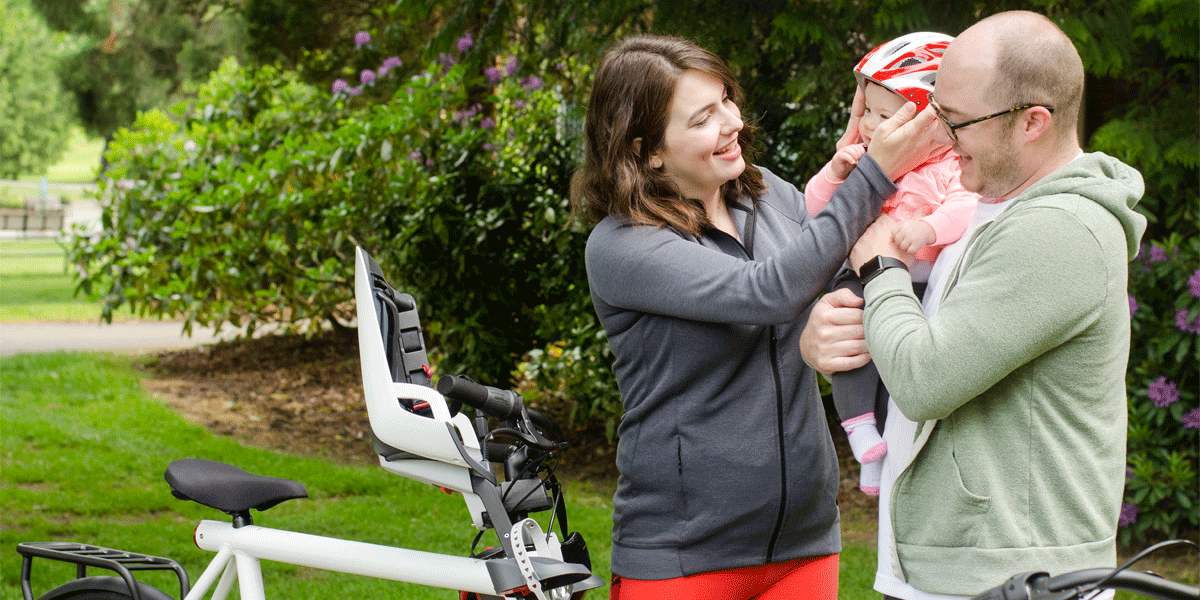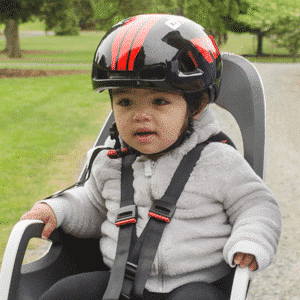Bike Helmet Size and Fitting for Kids
Ready to get out on the bikes with the family? Don’t forget to get the correct bike helmet size for all members of the family. Whether they’re just starting out or pros at bike riding, helmets are an important piece of safety gear for all riders. By wearing your own helmet, you’ll also be setting a good example for your children. Ready to find out how to get the proper bike helmet size? Keep reading for a quick refresher on bike helmet sizing.
Why Wear a Bicycle Helmet?
It’s the law in 22 states and more than 200 localities. Many of the laws are applicable only to children under 18, however there are some locations with all-ages laws. To see if your state or city is on the list check out the Bicycle Helmet Safety Institue. Bicycle helmets also help to reduce the risk of brain injury by 88% as well as offering substantial protection to the forehead and midface (1).
Steps for Correct Bike Helmet Fit
 Bike Helmet Size
Bike Helmet Size
Measure your child’s head around the widest circumference, typically right above the eyebrows, using a soft tape measurer. You may want to take several measurements to make sure that you have the widest part. If you are not able to measure your child’s head, you can also use the 50th percentile head circumference charts for boys and girls from the CDC as a rough estimate. Most helmets have a range of head sizes that they fit, check this number when purchasing your helmet.
Bike Helmet Position
The helmet should sit squarely on the head, with most of the forehead covered. You should be able to place one or two fingers between your child’s eyebrows and the helmet, and your child should be able to see the edge of the helmet in their peripheral vision. The bicycle helmet should not slip or move around when your child shakes their head.
Adjust the Helmet Straps
The side straps should meet in a Y shape just under the ear. These straps are sometimes easier to adjust if you take the helmet off first. To prevent strap creep push the little rubber band as close to the buckle as possible. If the helmet does not have a rubber band, you can add one, or even stitch the straps together once you’ve found the correct placement. Next, buckle the chin strap and tighten until it is snug. You should be able to slide no more than one finger under the chin strap. We recommend that you quickly check the straps each time your little one wears their helmet.
Why Replace a Bike Helmet
- Your child has outgrown their current bike helmet
- The helmet has been involved in any type of crash
- The helmet has been dropped onto concrete or another hard surface
- The helmet has any cracks, missing pads, or other non-functional parts
Other Safety Considerations
Helmets aren’t the only things that help to protect us as we’re riding around the neighborhood or city. Make sure you’re plenty visible by donning extra reflective gear or using flashing LED lights. Obey all traffic signs and signals while cycling so you can be a predictable vehicle like the other cars and trucks on the road. Make sure your kiddos are strapped in tight if you’re using a child bike seat or bike trailer. Always double check your equipment before heading out, and lastly Enjoy The Ride.
-
Bicycle Helmet Safety Institute, Helmet Effectiveness. https://helmets.org/stats.htm#laws


 Bike Helmet Size
Bike Helmet Size
